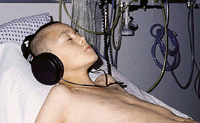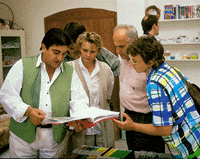No innovation has gained such a fast foothold and recognition among medical experts as the utilisation of the natural laws of harmony. When one considers that the term Medical Resonance Therapy Music was only coined 10 years ago, and then looks at the present level of documen-tation on research and developments in this new branch of medi-cine, and the statements of leading medical experts from many fields, then it is also worth-while examining the causes for such enor-mous medical success more closely. |
| MEDICAL RESONANCE THERAPY MUSIC® |
| Basis Programme |
| Relaxation |
| On the basis of the objective scientific research and the clinical observations this programme was designed for people suffering from tension back pain and all kinds of orthopaedic problems related to stress |
|
|
||
| Basis CD | ||
 |
||
| additional CD No. 1 | ||
 |
||
| additional CD No. 2 | ||
| more information | ||
| scientific research | ||
|
Prof.
Dr. med. Walentina Sidorenko
Digital
Pharmaceutics –
Harmonic Information:
Medication in the Intensive Care Unit
Report
on the accident victim, Igor Soltschenko
|
Dear Mr.
Tils, |
|||
 |
|||
|
His condition
was exceptionally poor. |
|||
|
According
to medical prognoses, chances of survival were minimal. This was also
confirmed by the medical advisors. The prognoses for the retention of
mental capabilities were also unfavourable. |
|||
|
Medical Resonance Therapy Music is currently used in the intensive station in the treatment of patients who are unconscious, patients in a narcotic slumber following surgery and children suffering serious skull-brain traumas. In order
to be able to extend the application of this method, the intensive care
unit needs further therapy equipment. |
 Prof.
Dr. Walentina Sidorenko |
||
|
|
|
||
|
|
|||